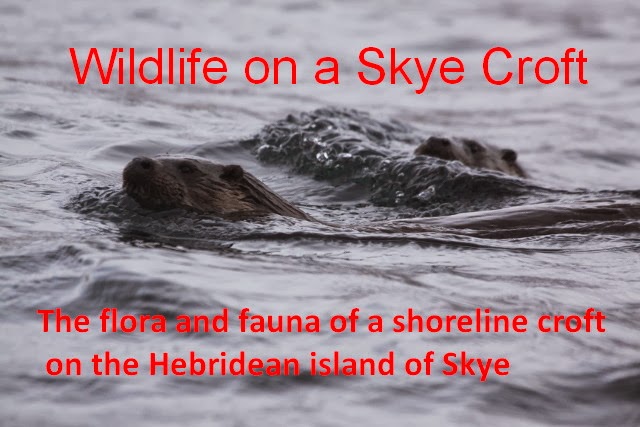I have two alternative titles for this update; either "Voles Ate My Broccoli" or "The Magnificent Seven". Take your pick, but let me cover both topics.
We have a vegetable garden which was created from a reasonably flat area, at one time covered mostly by a mix of soft rush and brambles. The cultivated area is around 200 square metres including an area set aside for apple trees and soft fruit. The soil is thin and stony and covers what is likely to have been a raised sea bed, which is very solid. It has taken several years to tame, but low fertility and lots of rain mean that the yields I get are low. Even then cutworms, slugs and snails and butterfly caterpillars do their worst, reducing crops to a pitiful level for the effort and cash expended. It is worth it, we tell ourselves, for the taste of fresh vegetables.
 |
| Small White Orchid |
The orchid count has continued, with a complete surprise earlier this week. Down amongst an area cleared of bracken over the last 3 years and now dominated by Creeping soft grass (Holcus mollis) I found the seventh orchid species to occur on the croft - Small white orchid (Pseudorchis albida). Only a single plant despite some searching. I used to think this was a rare plant, probably because when I lived down south it meant an early morning start to drive up to Keltneyburn, a Scottish Wildlife Trust reserve, where there is a decent colony in the meadow there. I have also seen it in Applecross, 10 miles away on the mainland, though it occurs in several locations on Skye, always as far as I can tell in small numbers. It is a Biodiversity Action Plan (BAP) species because of declining habitats, though other than some impressive plans I am not sure what that translates to in terms of action on the ground. There is certainly no feed-in to grants available under the Scottish government's interpretation of the EU common agricultural policy. Lesser butterfly orchid Platanthera bifolia) has the same status.
So "magnificent seven" orchid species it is together with 3 hybrids.
.JPG) |
| Narrow-bordered Bee Hawkmoth |
Another pleasant surprise was an uncommon day-flying moth, where there are very few records on Skye. I found a Narrow-bordered bee hawkmoth, another BAP species, resting on the grass. Similar to a clearwing moth, the wing scales are missing other than at the edges.





.JPG)

No comments:
Post a Comment